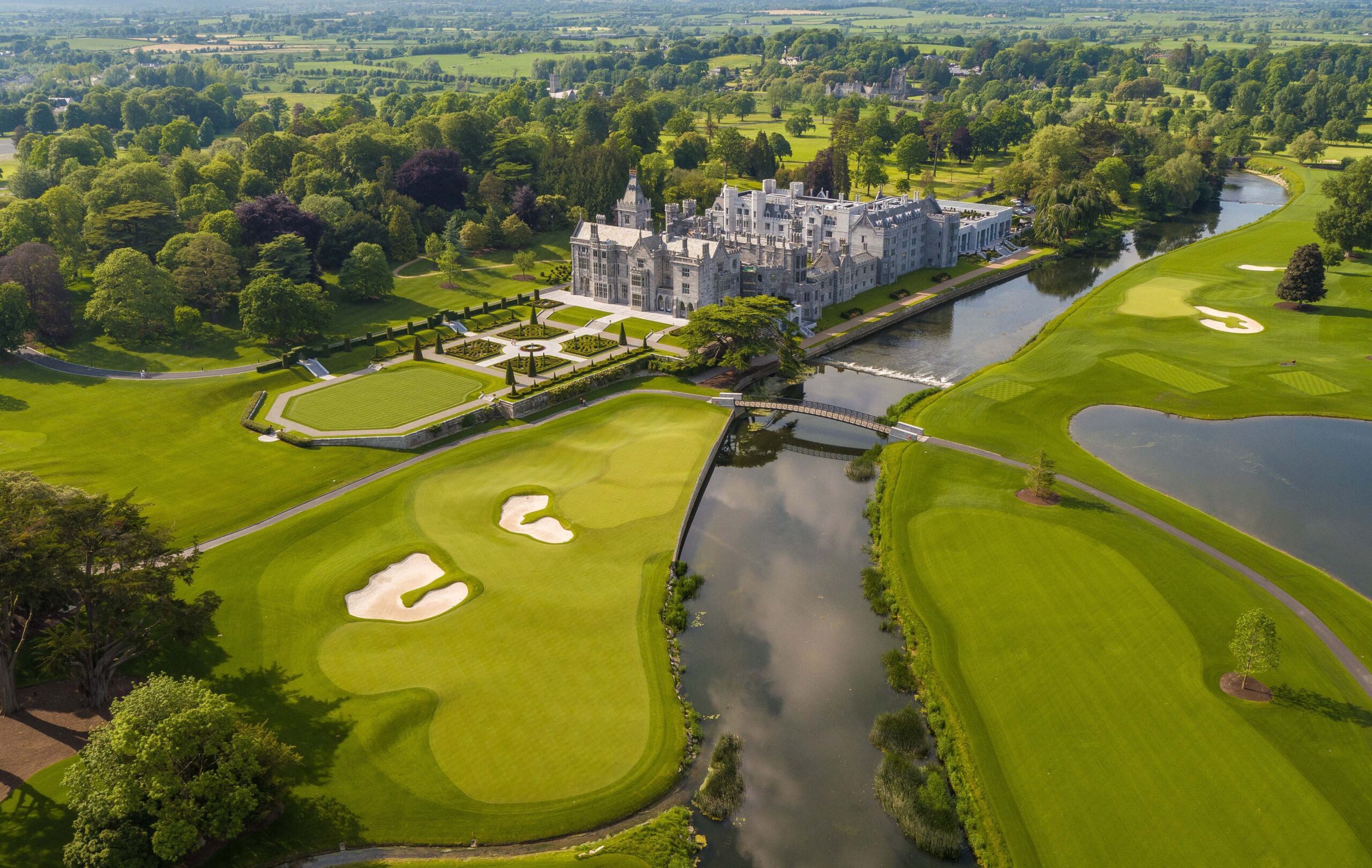A clear vision for championship conditions
Translating Vision into Championship Playability and Conditioning
Every successful championship venue begins with a clear design vision. Our role at Turfgrass® is to help the golf course architect bring that vision to life under tournament conditions, collaboratively and with full respect for the design. We bring global expertise to the planning of both development and redevelopment projects at venues aspiring to host tournament golf, but we always operate in support of the design, ensuring the architect’s strategy performs technically, ecologically and operationally on the ground. From design concept to tournament week, our philosophy is simple: architect-led, agronomist supported. Over the past two decades, we have worked on numerous major championship venues on both sides of the Atlantic for both the men’s and women’s game. Alongside architects and owners, we also support governing bodies, acting as an extension of the rules team when it comes to venue selection, set-up and tournament delivery.
Our involvement usually begins at an early stage, so that architectural intent is aligned with the realities of a site’s soils, microclimate, construction logistics and available maintenance resources. We develop agronomy specifications, rootzone profiles, grassing plans, irrigation strategies and grow-in programmes that correspond directly to how the architect intends the course to play and evolve.
We add the most value in the unseen layers that make championship golf reliable. This includes advanced soil engineering, ensuring drainage systems are designed to perform during peak rainfall periods, and tree management plans that coexist with turf while protecting broadcast sightlines. Working with the architect, we review teeing ground size and hole-location flexibility so that strategy is upheld, maintenance is practical and set-up provides options for the various environmental conditions.
Tournament infrastructure is considered with the same understanding. We help identify optimum spaces and viewpoints for grandstands, hospitality and spectator mounding, and model the movement of tournament traffic so that spectators circulate safely and efficiently without impacting play. We assist in planning cart path networks, their routing, widths and capacity to support both day-to-day operations and tournament week. Modern championships also rely on dependable agronomic infrastructure, so we integrate sub-surface and above-ground monitoring technology to inform watering, disease management and conditioning. We assist in the coordination of a discreet “spine” that tournament golf requires: fibre-optic cabling for scoring and broadcast, three-phase power, and water and sewerage pipework to key spectator zones throughout the course. By considering these points during the development planning stage , we reduce construction disruption, protect the architecture and streamline tournament delivery.
During construction and grow-in we monitor tolerances, rootzone placements and irrigation performance to ensure playing surfaces are firm, consistent and resilient. As tournament week approaches, we work with key governing body stakeholders, the architect and superintendent to integrate course set-up and infrastructure to the host venue with the goal of protecting and uphold the integrity of the architect’s vision and ensuring the best possible championship preparation.
This approach has allowed us to support some of the most important events in world golf. Our association with the Solheim Cup stretches back to preparations for the 2007 event at Halmstad in Sweden, and continues today with our reappointment as agronomists for the 2026 edition at Bernardus Golf in the Netherlands. That will be the sixth consecutive European Solheim Cup in which Turfgrass® has played a central role, following further events at Killeen Castle, St. Leon-Rot, Gleneagles and Finca Cortesin.
The Solheim Cup demands more than pristine surfaces. It requires consistency throughout the golf corridor , in an environment where conditions stand up to scrutiny from players, officials, sponsors and spectators. We take that responsibility seriously, and it has been a privilege to work alongside some of Europe’s finest courses and architects to deliver those conditions.
While tournament preparation is a hallmark of our service portfolio, Turfgrass® is equally engaged in long-term architectural collaborations. Perhaps the most high-profile example is Adare Manor in Ireland, host of the 2027 Ryder Cup. Working with Tom Marzolf of Fazio Design, we advised on every agronomic aspect of the project, from rootzone, sand capping and grass species selection to SubAir technology, as well as overseeing the grow-in. Our involvement has continued well beyond the course’s reopening in 2018, ensuring Adare remains in peak condition as Ryder Cup preparations intensify.
In my view, Adare shows how meticulous planning, design, construction, and agronomy, produce a course ready for championship golf. It demonstrates the value of early integration between architect and agronomist, where every element of the design is supported by the technical systems that allow it to thrive in tournament conditions.
In the southwest of Ireland, Tralee Golf Club shows how natural links terrain and a regimented long-term links golf agronomy programme can lead a golf course to tournament standard. Designed by Arnold Palmer in the 1980s, Tralee is set to host the 2026 Arnold Palmer Cup. We have supported the club with renovation specifications, sustainability initiatives and agronomic planning, helping to ensure the natural drama of the links is matched by best in class playability. Tralee is one of those rare properties where natural linksland meets agronomic evolution, and being selected to host the Palmer Cup is a tribute to the club’s progress and commitment.
Our ongoing work at Adare Manor, host of the 2027 Ryder Cup, together with nearly two decades of involvement in the Solheim Cup across six European venues, underlines the breadth of our experience. From supporting modern parkland venues built for the biggest international matches to delivering agronomic consistency for one of the game’s premier team events, these projects demonstrate how agronomy bridges design vision and championship reality.
As expectations for tournament conditioning continue to rise, and climate pressure intensifies, the role of agronomy in golf course development has never been more important. Early and ongoing collaboration between architect and agronomist ensures not only that courses can host the world’s biggest events, but that they remain true to their design intent for years to come. In recent years, the turfgrass® team has expanded its development and tournament expertise wuth the additions of Adam Moeller ( formerly of the USGA) and Brad Owen ( formerly of Augusta National), reinforcing our position in this sector of the market.
When a course steps onto the world stage, nothing can be left to chance. Every surface and detail, must perform exactly as intended. At Turfgrass®, we see our role as ensuring that, when the spotlight falls, the architect’s vision is realised at the very highest level.
Read the full article online @Golf Course Architecture

